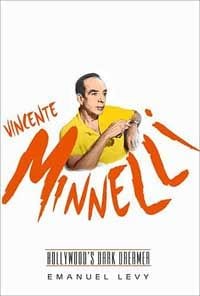
Emanuel Levy’s book on Vincente Minnelli, the author is quick to remind us, is the first full-length biography of the great MGM director who helmed the transcendent musicals Meet Me in St. Louis (1944) and The Band Wagon (1953) and the lurid melodramas The Bad and the Beautiful (1952) and The Cobweb (1955). “Why the neglect?” Levy wonders. “Is Minnelli too flamboyant? Too complex? Too much of a stylist? A victim of working in the popular and ‘feminine’ genres of the musical and the melodrama rather than in more ‘macho’ genres of war, action-adventure and suspense thrillers?”
There’s no arguing Levy’s unimpeachable intentions: “I seek to elevate the stature of Minnelli as a film artist of the first rank.” But this biography, which too often skips over Minnelli’s personal life — particularly his involvement with men — doesn’t offer much more than frequently wooden, uninspired analyses of the director’s 30-plus films.
Levy, the author of eight previous books on cinema, a former critic for Variety and a professor at UCLA Film School, takes umbrage at the term “queer sensibility” as a concept for analyzing the oeuvre of the bisexual Minnelli, who had affairs with men while marrying four times (most famously to Judy Garland) and raising two children (Liza with Judy; Tina Nina with Georgette Magnani). But the author sees no contradiction in proposing this pseudo-psychoanalyis: “Significantly, Minnelli’s formative years were shaped by a uniquely female sensibility since he was always surrounded with women. This background would account for his effeminate behavior and for what was considered to be distinctly female aesthetics.”
About those aesthetics: Minnelli’s color palette, with yellow a favorite hue, is an essential component in some of his greatest musicals, such as Meet Me in St. Louis — which he felt “should have the look of a Thomas Eakins painting” — An American in Paris (1951) and The Band Wagon. Minnelli’s assiduous attention to detail when setting up a shot drove many actors nuts, like the stars of the sensational Some Came Running (1958), Frank Sinatra and Dean Martin, who called the director “the artsy-fartsy”.
If swaggering Rat Packers were aggravated by Minnelli’s fussiness, that may have been precisely the director’s point. In one of his more astute moments, Levy notes that “Minnelli wanted to show that real men could wear Capezios … In Minnelli’s movies, creativity goes beyond sexual orientation, and the protagonist-artists always get the last laugh.”
That level of insight, however, is rare. Levy’s book contains several repetitions – within the span of four pages, he twice mentions the Texas-set melodrama Home From the Hill (1960) as a precursor to the TV show Dallas — and clunky, practically meaningless observations such as, “Indeed, accomplishment is a key word to describe Minnelli’s existence.”
As a first step in general Minnelli studies, Levy’s book will hopefully lead readers to the director’s marvelous, little-seen films such as The Clock (1945). In the meantime, let’s hope a second biography is better written and structured.

![Call for Papers: All Things Reconsidered [MUSIC] May-August 2024](https://www.popmatters.com/wp-content/uploads/2024/04/all-things-reconsidered-call-music-may-2024-720x380.jpg)



